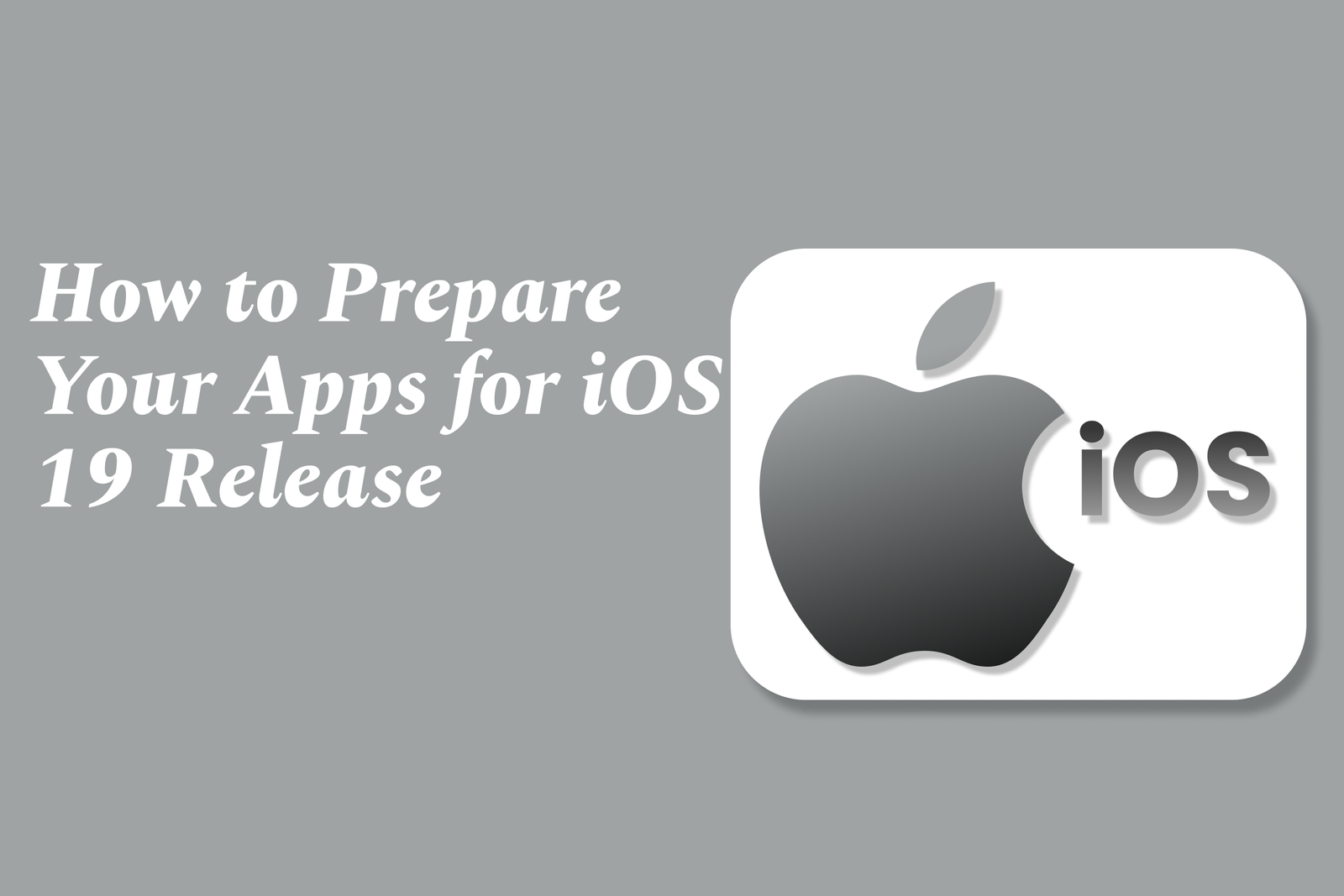How to prepare your apps for iOS 19 release
Preparing your apps for iOS 19 involves adapting to the new Liquid Glass design, integrating on-device AI with Apple Intelligence, using App Intents for system-wide features, updating age ratings for compliance, and testing early via Apple’s beta programs to ensure seamless performance.
How to Prepare Your Apps for iOS 19 Release
1 ) Familiarize Yourself with the New Design Language: Liquid Glass
iOS 19 introduces a broad design update called Liquid Glass, featuring fluid optical effects that refract content, reflect light, and add lensing along edges. Developers should adapt their app interfaces to harmonize with this refined, unified design style that enhances user experience across Apple platforms.
2 ) Leverage Apple Intelligence with On Device Large Language Models
Apple Intelligence is now deeply integrated into iOS 19, providing on device large language models for intelligent features. Use the Foundation Models framework to incorporate capabilities like text extraction, summarization, and other AI powered functions in your app, ensuring user data privacy and offline functionality at no added cost.
3 ) Integrate App Intents for Seamless System wide Functionality
The App Intents framework enables your app’s core functions to be accessible system wide via Siri, Spotlight, Widgets, and other controls. By adopting this framework, developers can offer context aware actions, interactive widgets, and automation possibilities that enhance app discoverability and usability beyond the app itself.
4 ) Update Age Ratings in App Store Connect for Regional Compliance
Apple has updated the App Store age rating system with more granular categories (13+, 16+, 18+) suited to different regions. New questions regarding in app controls, content capabilities, and sensitive themes help in accurately rating your app. Ensure your app’s age rating reflects both Apple’s system and any higher minimum user age policies you enforce.
5 ) Enroll in Apple Beta Software Program and Developer Program
To test and optimize your apps ahead of the iOS 19 release, enroll in the Apple Beta Software Program for early access to pre release software, and use the Apple Developer Program to access developer betas and tools for building next generation apps.
By following these key steps, developers can ensure their apps are well prepared to deliver optimized experiences aligned with the powerful innovations and updated guidelines introduced in iOS 19.
https://justacademy.in/news-detail/android-sdk-tool-updates
https://justacademy.in/news-detail/swift-6.1-preview:-exciting-features-coming-soon
https://justacademy.in/news-detail/mastering-swift-macros-in-ios-development
https://justacademy.in/news-detail/flutter-vs-unity-for-game-dev-2025
https://justacademy.in/news-detail/react-native?s-secret-sauce-for-faster-app-deployment
Related Posts
In 2025, top Angular libraries offer modern, feature-rich components and tools for building dynamic web apps. From powerful data grids to low-code platforms like UI Bakery, these libraries enhance development speed, UI design, and scalability, making them essential for Angular developers.
Migrating from AngularJS to Angular 17 involves gradually upgrading your app by running both frameworks together using tools like ngUpgrade, rewriting components in TypeScript, and adopting Angular’s modern architecture to enhance performance, maintainability, and long-term support.
Angular state management tools help organize and handle app data efficiently, improving scalability and maintainability. Popular options include NgRx for robust, RxJS-based patterns, and newer Signal Store solutions that offer simpler, reactive approaches integrated tightly with Angular’s latest features.
RxJS in Angular empowers developers to manage asynchronous data streams with powerful operators like `forkJoin`, `combineLatest`, and `zip`. Mastering these key operators in 2025 is essential for building efficient, reactive applications that handle complex event sequences seamlessly.
Angular performance optimization in 2025 focuses on improving app speed and responsiveness by using techniques like OnPush change detection, lazy loading, efficient data caching, and AOT compilation. These practices reduce load times, enhance user experience, and ensure scalable, fast Angular applications.
In 2025, Angular remains preferred for large-scale, enterprise apps with its robust, all-in-one framework, while Vue attracts developers seeking simplicity and fast development for smaller projects. Both frameworks excel, with choice driven by project needs and team expertise.
Angular Signals are a new reactive primitive in Angular 16 that enable fine-grained, efficient change detection by automatically tracking dependencies and updating only affected parts of the UI. They simplify state management and boost app performance, revolutionizing Angular's reactivity model.
Angular interview questions to prepare in 2025 focus on core concepts like components, directives, data binding, routing, and dependency injection, along with TypeScript mastery and latest Angular features to ensure strong practical knowledge for building scalable, efficient web applications.
AngularJS reached its official end of support in January 2022, meaning no further updates or security patches. To ensure app security and performance, developers should consider migrating to modern Angular versions or seek third-party long-term support options if immediate migration isn’t possible.
The Angular Roadmap 2025 highlights upcoming features focused on improving developer experience and performance, including zoneless Angular, Signals integration, enhanced Forms, async data handling, improved HMR, and expanded Angular Material/CDK enhancements, driving modern, efficient web app development.










